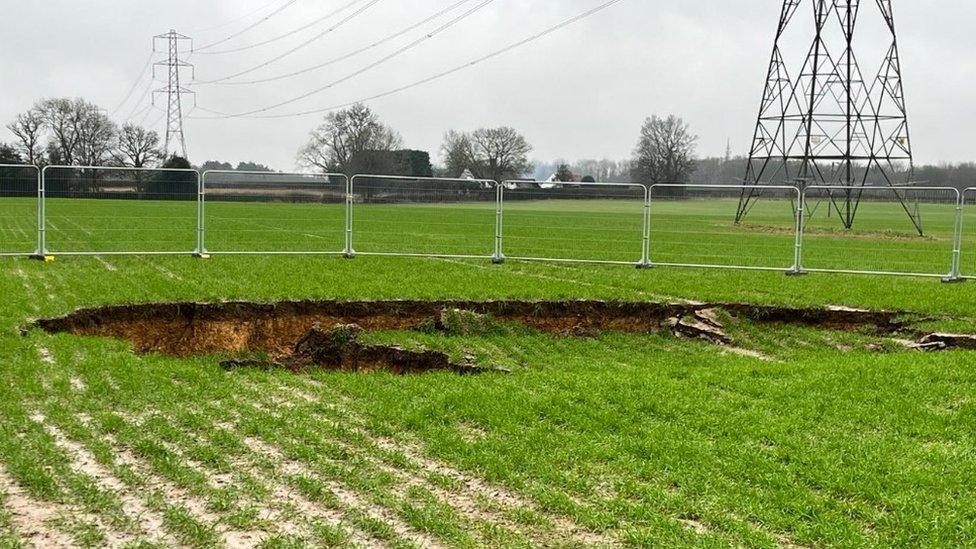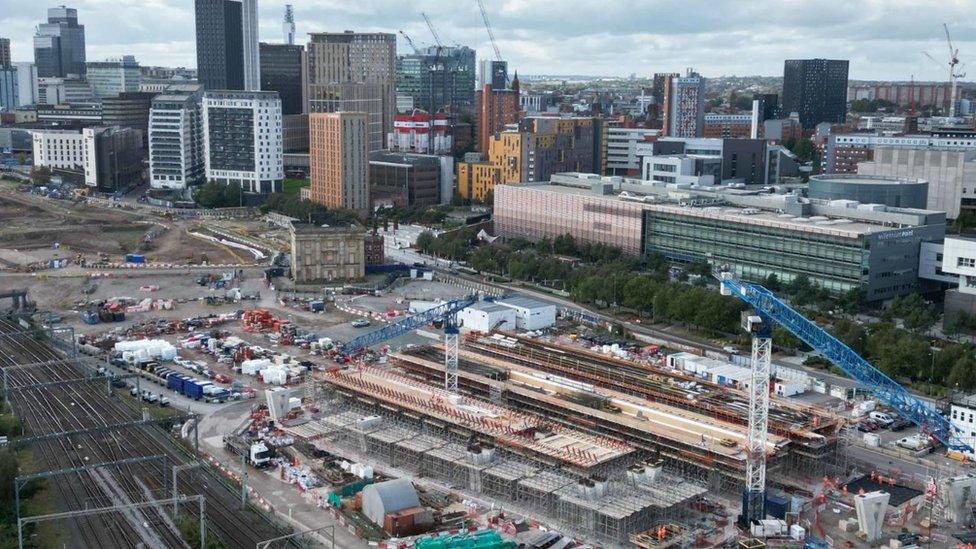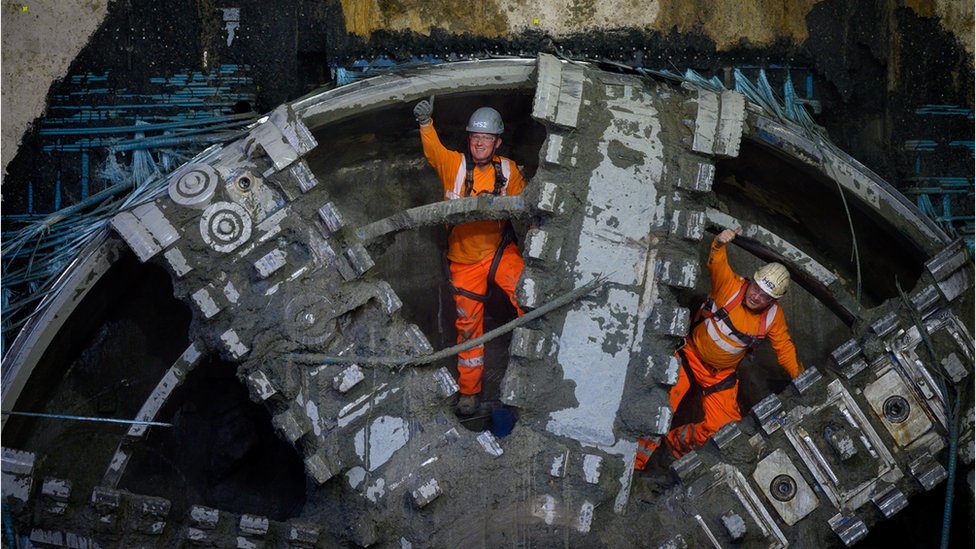HS2 tunnelling machine completes underground journey
- Image source, PA Media

Image caption, Members of the Tunnel Boring Team looked out from within Florence as it completed its journey
1 of 8
- Published
The largest tunnelling machine ever used on a UK rail project has completed its 10-mile (16km) journey after nearly three years.
Florence - named after Florence Nightingale - has cut through the chalk beneath the Chiltern Hills in Buckinghamshire.
The tunnel will form part of HS2, the high-speed rail link between London and Birmingham.
There were fireworks and cheers from hundreds of workers as they watched the breakthrough near South Heath.
'Groundbreaking moment'
Beginning its journey in Rickmansworth, Hertfordshire in May 2021, it has excavated one of two tunnels at a depth of up to 80m (262ft).
A second, identical machine is expected to achieve its breakthrough in the coming weeks.
Rail minister Huw Merriman said it was a "groundbreaking moment " and praised the dedication of the "450-strong team" that worked on it.
HS2 Ltd said about 17 people staffed an "underground factory" in shifts to keep it running constantly.
The tunnel was lined with 56,000 pre-cast concrete segments as the machine moved at an average speed of 16m (52ft) a day.
Florence, which has a diameter of 10.25m (34ft), will now be dismantled.
Some large parts will be reused in other tunnel boring machines (TBM) and other parts scrapped.

Huge 2,000-tonne machines have been creating tunnels as part of the HS2 project
Masses of chalk and other material removed during the tunnelling will be used for a grassland restoration project at the site where the machines were launched.
David Emms, project client for HS2 Ltd, said: "What we are achieving today has helped to set new standards for the construction industry in the UK and around the world."
Four similar TBMs are being used for tunnels on the approach to London, while another two will work on Birmingham's Bromford Tunnel.
Follow East of England news on Facebook, external, Instagram, external and X, external. Got a story? Email eastofenglandnews@bbc.co.uk, external or WhatsApp us on 0800 169 1830
Related topics
- Published17 February 2024

- Published12 February 2024

- Published24 January 2024

- Published23 January 2024







